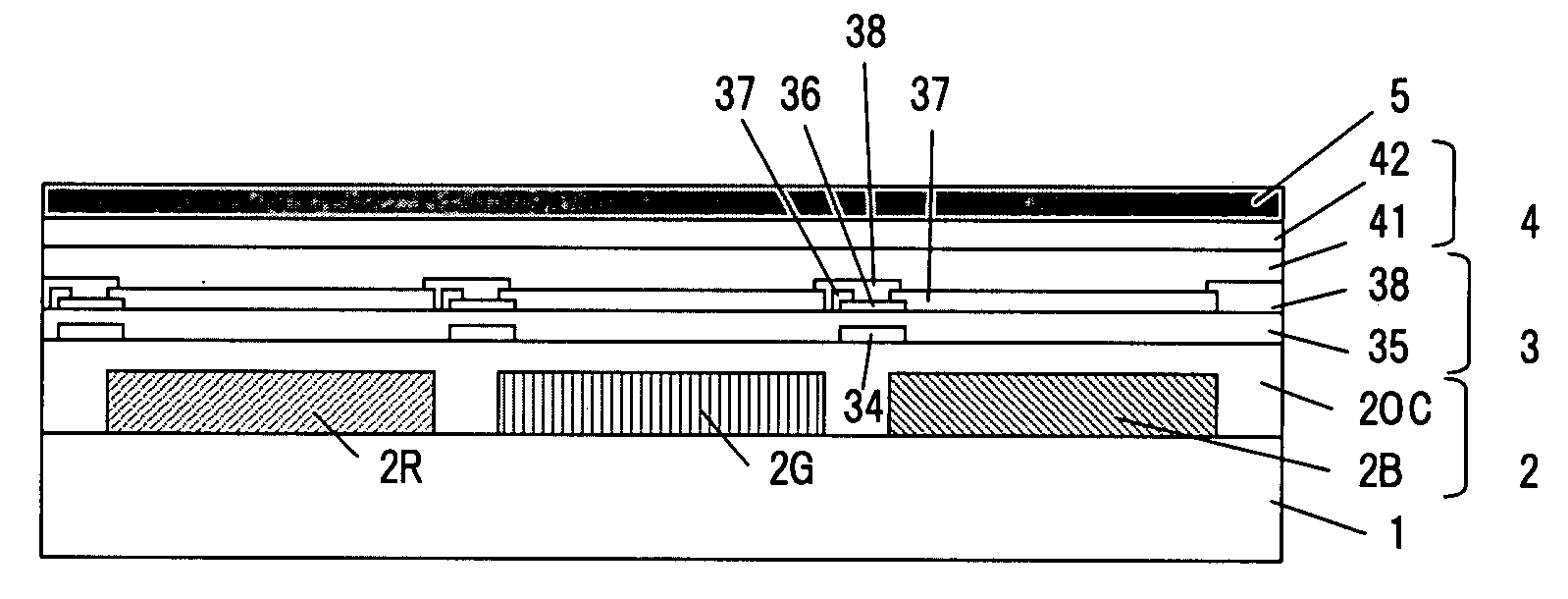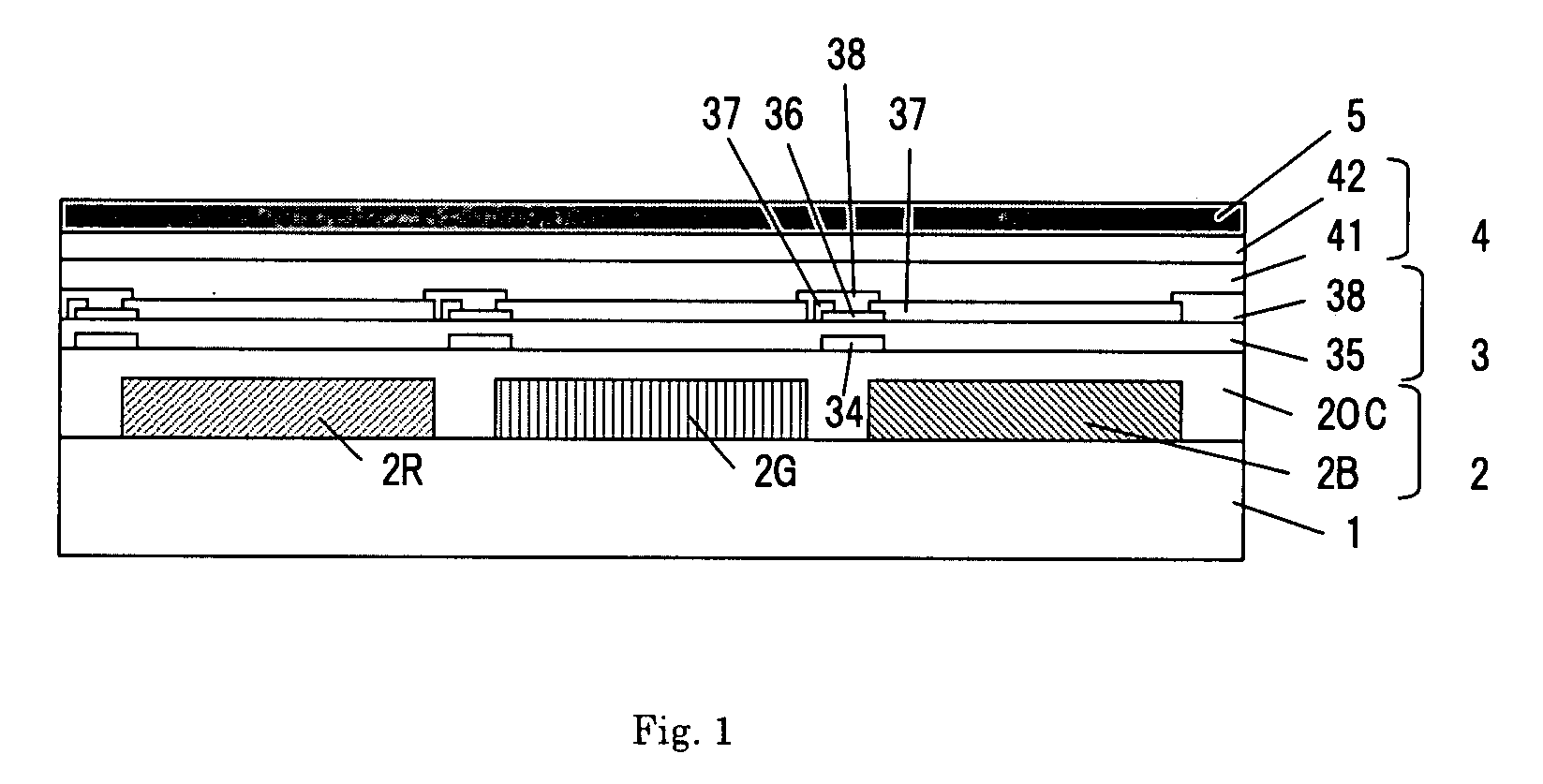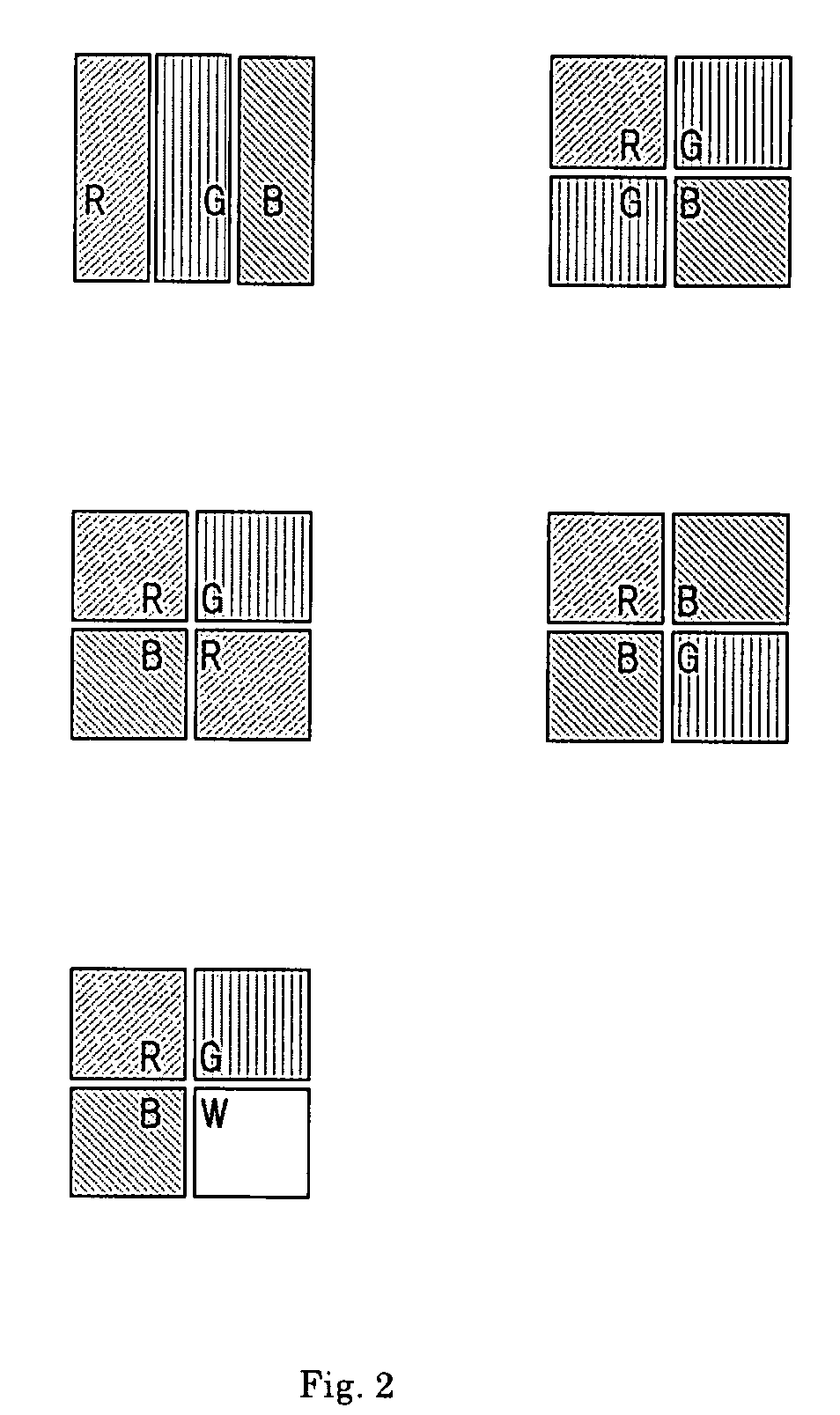Color el display and method for producing the same
a color el and display technology, applied in the direction of discharge tube luminescnet screens, discharge tube/lamp details, coatings, etc., can solve the problems of insufficient response to high-speed pixel signals, large amount of power consumption, narrow viewing angle, etc., to improve the aperture ratio of active matrix type organic el displays, the effect of good color purity
- Summary
- Abstract
- Description
- Claims
- Application Information
AI Technical Summary
Benefits of technology
Problems solved by technology
Method used
Image
Examples
example 1
[0064]As a transparent substrate 1, glass was used, on which color filters 2 were formed through pigment-dispersed resist coating, exposure, development and burning (FIG. 11A). 2R denotes red, 2G denotes green, 2B denotes blue, and 2OC denotes over coating. Here, for the over coating, neither exposure nor development is necessary. The burning temperature was 220° C.
[0065]Next, ITO was formed into a film as the first electrode layer 31 including the gate electrode G1 and capacitor electrode C, by reactive sputtering (room temperature, DC sputtering) under an Ar+O2 gas using ITO as a target, which was patterned through photoresist coating, exposure, development, wet etching with hydrochloric acid, and resist strip (FIG. 11B). Then, each of SiON as the first insulating layer 32 and InGaZn oxide as the first semiconductor layer 33 was formed into a film continuously, by reactive sputtering (room temperature, RF sputtering) under an Ar+O2+N2 gas using SiN as a target, and by reactive spu...
example 2
[0069]As the transparent substrate 1, glass was used, on which color filters 2 were formed through pigment-dispersed resist coating, exposure, development, burning, fluorescent coloring material-containing resist coating, exposure, development and burning (FIG. 15A). 2R, 2G and 2B denote red, green and blue band-limiting filters, and 2RR and 2GG denote red and green color conversion filters, respectively, and 2OC is an over coating. Here, for the over coating, neither exposure nor development is necessary. The burning temperature was 200° C.
[0070]Next, ITO was formed into a film as a first electrode layer 31 including the gate electrodes G1 and G2 by reactive sputtering (room temperature, DC sputtering) under an Ar+O2 gas using ITO as a target, which was patterned through photoresist coating, exposure, development, wet etching with hydrochloric acid, and resist strip (FIG. 15B). Then, each of SiON as the first insulating layer 32 and InGaZnMg oxide as the first semiconductor layer 3...
example 3
[0074]A color EL display was produced in the same process as in Example 2, except that, as the light-emitting layer 42, a polyolefin-based material was used as a blue light-emitting layer 42B in place of a white light-emitting layer 42W. The process of forming a TFT circuit and all the subsequent processes were performed at 200° C. or less. The color EL display thus produced could perform display having good color purity and brightness due to a large aperture ratio, when being viewed from the transparent substrate 1 side.
PUM
| Property | Measurement | Unit |
|---|---|---|
| temperature | aaaaa | aaaaa |
| wavelength range | aaaaa | aaaaa |
| transmittance | aaaaa | aaaaa |
Abstract
Description
Claims
Application Information
 Login to View More
Login to View More - R&D
- Intellectual Property
- Life Sciences
- Materials
- Tech Scout
- Unparalleled Data Quality
- Higher Quality Content
- 60% Fewer Hallucinations
Browse by: Latest US Patents, China's latest patents, Technical Efficacy Thesaurus, Application Domain, Technology Topic, Popular Technical Reports.
© 2025 PatSnap. All rights reserved.Legal|Privacy policy|Modern Slavery Act Transparency Statement|Sitemap|About US| Contact US: help@patsnap.com



